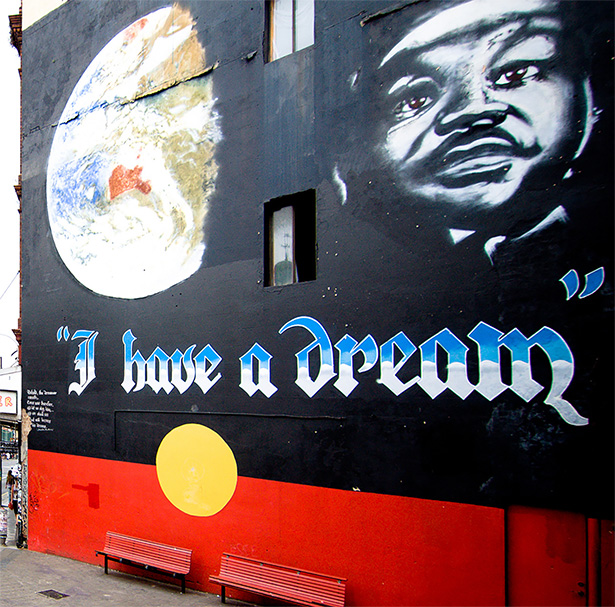With news breaking that Banksy, the world’s most celebrated graffiti artist, has opened Dismaland, a dystopian take on Disneyland in the UK, it seems an appropriate day to ponder the nature of street art in Sydney. Is graffiti a way of democratising art and bringing beauty onto the street or, as many disgruntled local residents argue, a simple act of vandalism?
Currently, the City of Sydney has stringent anti-graffiti regulations in place, which aim to remove any new graffiti within 24 hours of it being discovered (or dobbed in online.)But Jenny Green, a councillor with the City of Sydney, told ABC’s Life Matters presenter Natasha Mitchell that Sydney is looking to introduce a new policy that will encourage the same kind of street art found in Melbourne. “I love the Melbourne laneways,” Councillor Green said, “They are a great tourist drawcard.” In the same program, Professor Alison Young (Chair of Criminology at the University of Melbourne) put forward her view that tagging is an under-appreciated art form.
https://soundcloud.com/abc_rn/excerpt-the-beauty-and-art-of-tagging
(*for a full version of the Life Matters podcast on Street Art see end of article)
But who will decide what constitutes an acceptable form of street art? A research paper published recently by a Vienna-based academic argues that street art is an “artistic evolution of graffiti” whereas graffiti is defined as “writing or painting on public walls.” In layman’s terms, paste-ups and stencils are accepted as aesthetic additions to public spaces, but tagging is commonly seen as a criminal defacement of property. The problem is that the line between “street art” and “graffiti” is often blurred – resulting in embarrassing incidents such as the time when one of Banksy’s million-dollar works was removed from a wall by city cleaners in Melbourne.
Chris Tamm, who runs guided tours of Sydney’s graffiti hotspots in Newtown and St Peters, told Time Out that Sydney is dominated by “traditional 80s graffiti, which is the writing… “To be honest, I think a lot of tagging is like a dog urinating. People just walk around drunk with a marker pen. According to criminology reports, most taggers are 18 and stop as soon as they’re old enough to get in serious trouble. But there are people in Sydney who are in their forties who have been tagging since the 1980s. There are graffiti grandparents out there who encourage their kids to do it.”
In his mini-documentary shot on the streets of Newtown, Jackie Tearoha – aka Two Twenty Two Collective – attempts to settle the “street art versus graffiti” debate:
As councillors debate Sydney’s new street art policy, there is a positive precedent for artists who have expressed their creativity illegally on the walls. Newtown’s famous mural, which started as an illegal act performed in darkness by Juilee Pryor and Andrew Aiken, ended up being heritage listed by Marrickville Council in 2014.
Taggers, graffers and paste-up and stencil artists across Sydney can but dream of having their artwork similarly preserved.
In the full version of the Life Matters podcast, Natasha Mitchell interviews City of Sydney Councillor Jenny Green, Professor Alison Young (Francine McNiff Chair of Criminology University of Melbourne) and street artist Baby Guerrilla.

Dismaland looks horribly creepy but so intriguing, great insight Julie, might have to book a trip to the UK
LikeLike